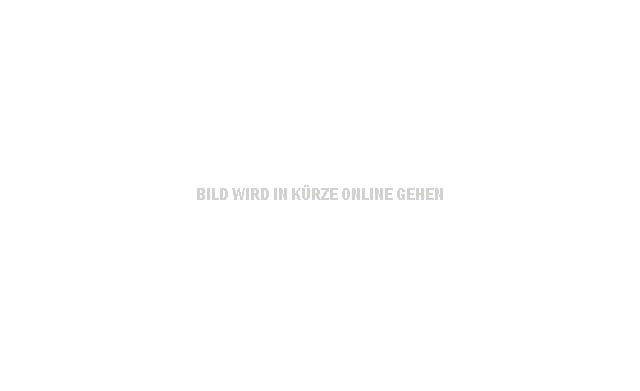Backing
On the following pages you will find an introduction to the basics of the abrasive pad. Knowledge about the connection between flexibility and tear resistance is crucial for understanding. The aim is to gain an understanding of the use of different documents and to be able to select the right document for the application parameters and surface geometries in practice.
CUMI AWUKO Abrasives GmbH
- 1. Abrasive pad
- 2. Basic bond
- 3. Coating
- 4. Abrasive grain
The backing
The backing carries the abrasive grain and transfers the cutting forces that arise during grinding. The requirements in everyday work require backings with high flexibility and tear resistance.

Flexibility
So that workpieces with many curves and profiles can be processed, the base of the abrasive must be able to adapt to these shapes. Only abrasives on a flexible base enable the surface to be sanded evenly and the workpiece to be processed optimally and evenly.

Tensile strength
Depending on the machine being used and the amount of material to be removed, grinding belts are exposed to high loads. The larger the grain on the base, the higher the force. Only tear-resistant and stable backings can meet these requirements.

The various backings
Depending on the requirements, high flexibility, extreme tear resistance or both are required. Not every material has both properties. It is therefore necessary to use different materials for different areas of application and customer requirements.
Four different backings are used in practice:
- Paper
- Cloth
- Polyester
- Fiber

Paper
Silicon carbide has a strongly wedge shape. Its surface is very hard and sharp-edged. These properties determine the area of application of silicon carbide. The sharpness is required to work on "soft" materials that tend to avoid the cutting edge rather than being machined (e.g. plastics, leather). The hardness is required to cut hard materials (e.g. stone, glass).

Paper backing
Paper is a very versatile material. There are paper pads for hand sanding, for hand-held sanding tools and for machine sanding. Paper is flexible enough to be used in different strengths in the hand-held area. The use of paper for belt sanding requires more stable material with higher tear resistance. However, this also increases the weight of the paper and the flexibility.
Paper backings are available with different basis weights. The weight per unit area therefore decides whether the paper base is flexible or tear-resistant and thus the possible use. Letters from A to G indicate the gradation. The later the letter in the alphabet, the higher the weight of the paper. The tensile strength and stability increase with the weight. The flexibility, however, is decreasing.
Grit toughness
In connection with abrasives, toughness of the Grit means the resistance of the Grit to crack propagation. If the resistance is too low, the Grit wears out, although there is still sufficient Grit sharpness.
The toughness increases - from left to right - from silicon carbide (SIC) to corundum (HEK) to zirconium corundum (ZK) and ceramic Grit (SG).
Paper backings are available with a weight of approx. 80 g to 500 g. Up to 250 g it still has enough flexibility to be used in hand sanding. From 250 g, paper is suitable for processing wood and metal in machine sanding on long and wide belts. F paper e.g. has enough strength and stability to withstand heavy loads.
Grading Systems Paper
| Identification |
Weight [g / m2] |
Application |
| A-paper |
<85g/m² |
hand sanded sheets, strips, rolls |
| B-paper |
85 - 110g/m² |
hand sanded sheets, strips, rolls |
| C-paper |
110 - 135g/m² |
hand sanded, hand-held machines sheet, stripe, ribbon |
| D-paper |
135 - 220g/m² |
hand sanded sheets, strips, tapes |
| E-paper |
220 - 270g/m² |
belt sanding long and wide belts |
| F-paper |
270 - 350g/m² |
belt sanding long and wide belts |
| G-paper |
350 - 500g/m² |
belt sanding long and wide belts |
Cloth backing
When it comes to the processing of strongly profiled workpieces, paper backings are not suitable. Paper is flexible, but it crumples when it is extremely bent. Cloth fabrics have a very high tensile strength and a flexibility that is adapted to the grinding process. If a Cloth pad is bent over, it will return to its original condition without crumpling.
Because of their properties, Cloth fabrics are mainly used in the belt area for processing highly profiled workpieces. To differentiate between the different qualities, Cloth fabrics are divided into four different fabric types:
Grading Systems Paper
| Identification |
Characteristics |
| J |
flexible Egyptian cotton cloth |
| JF |
very flexible Egyptian cotton cloth |
| X |
stiff Egyptian cotton cloth |
| XF |
yet flexible Egyptian cotton cloth |
Polyester backing
If there are extreme loads on the surface during sanding, paper and cotton are often no longer sufficient. Here a fabric is required which is very robust and tear-resistant.
Polyester linings have a very high tear resistance. They are therefore particularly suitable for surface and edge grinding. They are not suitable for profiled parts. Polyester is used e.g. for surface and edge grinding of steel and stainless steel and for deburring weld seams.
Fiber backing
Fiber occupies an exceptional position as documentation material. Fiber is used exclusively on abrasives that are produced for angle grinders. Fiber is not used for other devices. The thickness of the base varies between 0.6 and 0.8 mm. Fever is produced by parchmenting several layers of paper.